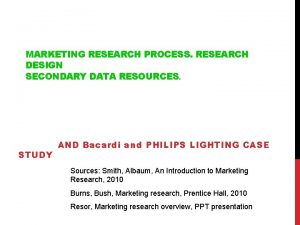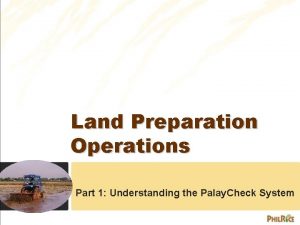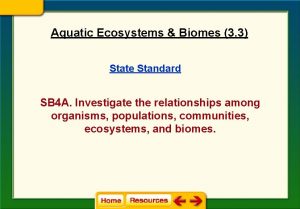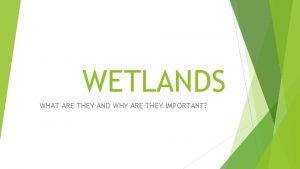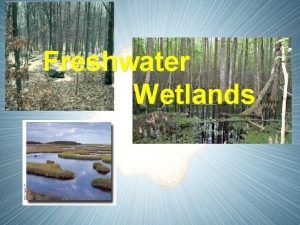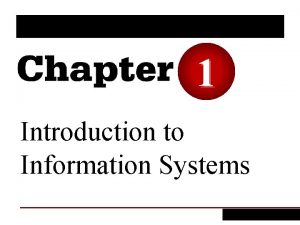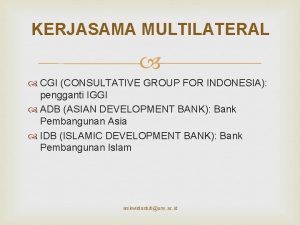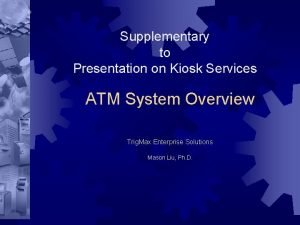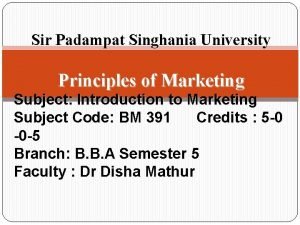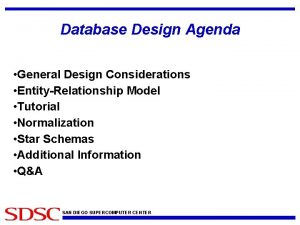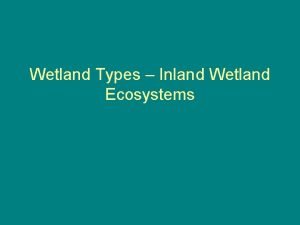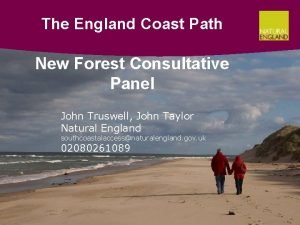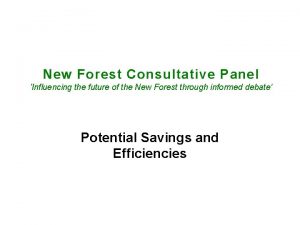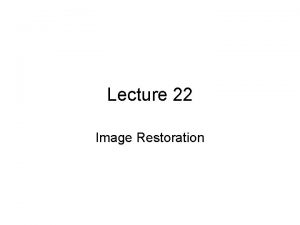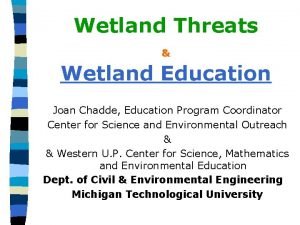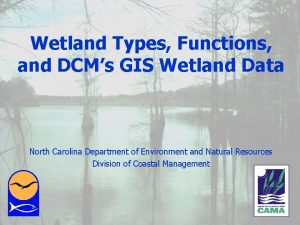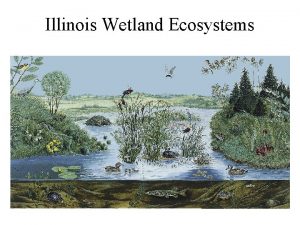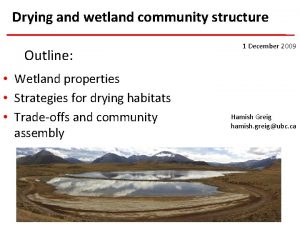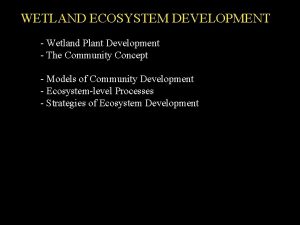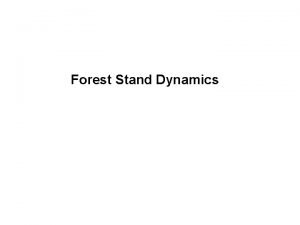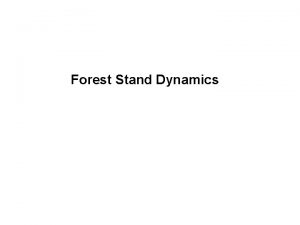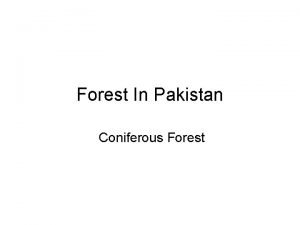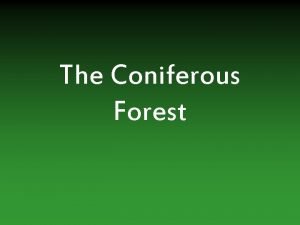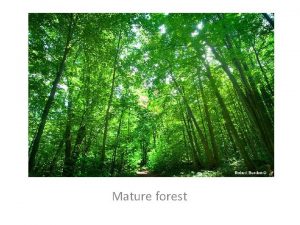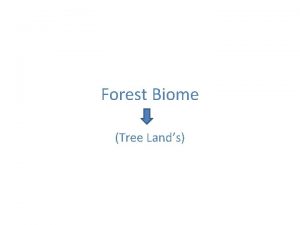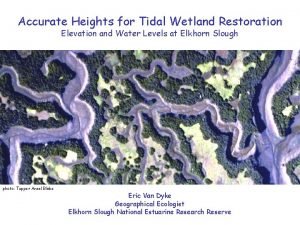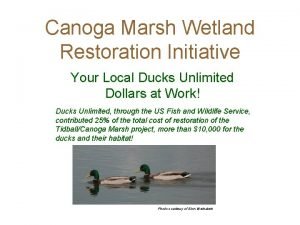Wetland Restoration Planning considerations New Forest Consultative Panel






















- Slides: 22

Wetland Restoration Planning considerations New Forest Consultative Panel – 3 Sept 2015

This evening • The need for planning permission • The planning application process and relevant planning considerations

The need for planning permission • Only relatively recently that the need for planning permission has been questioned – prior to June 2006, the FC enjoyed “crown immunity” from the planning system

The need for planning permission i. Do the proposed works constitute “development”? ii. If so, do the proposed works benefit from any “permitted development rights”?

The meaning of development • Defined in s 55(1) of the Town & Country Planning Act 1990 as “the carrying out of building, engineering, mining or other operations in, over or under land, or the making of any material change in the use of any buildings or other land”.

The meaning of development • Defined in s 55(1) of the Town & Country Planning Act 1990 as “the carrying out of building, engineering, mining or other operations in, over or under land, or the making of any material change in the use of any buildings or other land”.

Associated works include: • Meander restoration • Bed level raising/partial drain infill • Drain infill/bed level raising using heather bales • Installation of debris dams • Repair of nick points and drain infill • Removal of spoil banks • Tree felling, scrub and vegetation clearance • Replacement, maintenance or relocation of access structures

A question of scale • Extent of channel excavation and bed raising • The use of heavy machinery, such as steel tracked hydraulic excavators and dumpers, to carry out the works • Taken altogether, does it amount to the "carrying out of engineering …or other operations”?

A question of scale • Scale 1 - Mire schemes where no meander restoration - only drain infill up to 1000 m • Scale 2 - Mire restoration schemes involving meander restoration meander/drain infill works involving 1000 - 2000 m • Scale 3 - River restoration - + 2000 m

Do the proposed works benefit from any PD rights? • Town and Country Planning (General Permitted Development) Order 2015 – the Crown enjoys “permitted development rights” (part 19, sch 2 of the GPDO). – very extensive – new buildings, works or equipment required for operational purposes – “the provision, rearrangement of a sewer, main pipe, cable or other apparatus”

Do the proposed works benefit from any PD rights? • Also relevant to consider part 6 PD rights (Agriculture & Forestry) – includes “any excavation or engineering operations which are reasonably necessary for the purposes of agriculture or forestry” • Purpose is connected to site management for nature conservation (not agriculture)

If the Environment Agency undertook the works… • Part 13 rights Environment Agency – “the maintenance, improvement or repair of works for measuring the flow in any watercourse or channel”

A question of scale • Scale 1 - Mire schemes where no meander restoration - only drain infill up to 1000 m • Scale 2 - Mire restoration schemes involving meander restoration meander/drain infill works involving 1000 - 2000 m • Scale 3 - River restoration - + 2000 m

The planning application process • All planning applications need to be screened to determine whether or not an EIA is required • Our view is that the works to date do not fall within any of the relevant categories • FC undertaking a voluntary EIA for the proposed works at Latchmore

The planning application process • Also need to take account of the Habitat Regulations 2010 • Appropriate Assessment required when a project: – is likely to have a significant effect; and – is not connected to the conservation management of the site.

Supporting documentation • Planning Statement, incorporating Design & Access Statement • Biodiversity Checklist • Biodiversity Statement • Flood Risk Assessment • Archaeology Report (including Written Scheme of Investigation and Desk Based Assessment) • Construction Environmental Management Plan • Construction Traffic Management Plan • Site plans showing – Site Location, Access Routes, Schedule of Works, Cross Sections of Works

Planning considerations • Purpose of the proposed works, i. e. are they for the conservation and protection of biodiversity and ecology? • Assessment of impacts on: – protected species and landscapes – the special qualities, character, amenity and landscape setting of the site and wider National Park – grazing and commoning rights – flooding – archaeology and heritage assets – highway safety and access – public access and amenity – residential amenity

Planning applications to date… • Slufters (14/00394) – approved 17 July 2014 • Harvestslade (14/00611) – approved 21 November 2014 • Amberslade & Broomy (15/00045) – approved 17 March 2015 • Pondhead (15/00294) – pending So. S ‘screening direction’

Review of completed schemes • Fletchers Thorns • Slufters • Ditchend

To conclude… • Planning permission required for all meander and drain infill works exceeding a linear length of 1000 m • Smaller schemes considered on a ‘case by case’ basis • All applications formally screened under EIA & Habitat regulations • Applications cannot be determined under delegated powers

Wetland Restoration Planning considerations New Forest Consultative Panel – 3 Sept 2015

 Continuous panel vs discontinuous panel
Continuous panel vs discontinuous panel Zıt panel
Zıt panel Tax considerations for setting up a new business
Tax considerations for setting up a new business Wet land preparation
Wet land preparation Wetland dominated by nonwoody plants
Wetland dominated by nonwoody plants Submerged gravel wetland
Submerged gravel wetland What does a wetland do for the environment
What does a wetland do for the environment 2013 apes frq
2013 apes frq Freshwater wetlands purify water by
Freshwater wetlands purify water by Example of consultative register
Example of consultative register Directive style decision making
Directive style decision making Consultative committee for space data systems
Consultative committee for space data systems The development of a personal selling philosophy involves
The development of a personal selling philosophy involves Is a consultative function of the mis department
Is a consultative function of the mis department Consultative selling definition
Consultative selling definition Sebutkan negara yang menjadi anggota cgi?
Sebutkan negara yang menjadi anggota cgi? Consultative sales presentation guide
Consultative sales presentation guide What are the general considerations in machine design
What are the general considerations in machine design Emv kiosk considerations
Emv kiosk considerations Three considerations of societal marketing concept
Three considerations of societal marketing concept Mechanical design of transmission line
Mechanical design of transmission line Database design considerations
Database design considerations Psychomotor considerations language acquisition
Psychomotor considerations language acquisition
